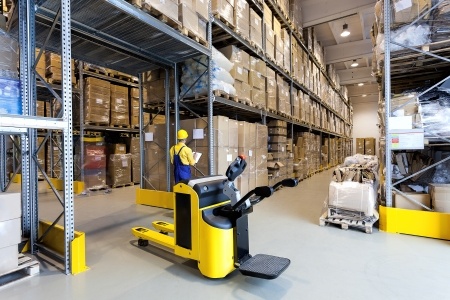The whole world has been utterly transformed by the newest technologies, and the workplace is no different. From retail outlets to mom-and-pop grocery stores, cutting-edge technology sits alongside some of the standard mainstays of the modern business. Warehouses, which have been a crucial resource in the world of high-demand eCommerce and ever more demanding consumers, have embraced technology in ways that are often surprising. Far from being slow to adapt to new tech, warehouse operators are often the first business sector to integrate new tech into their business processes and working methods. Here’s how tech has changed the modern warehouse and how it continues to do so.
1. Cloud-Based Management
There are many options when looking at warehouse management systems (WMS), and most warehouses will use a wide range of software and hardware to optimize efficiency. It used to be that this would require local hardware that could be prohibitively expensive and would require a dedicated and costly IT team. Now, a cloud-based WMS allows warehouse owners to carry out management processes seamlessly.
2. Space Efficiency
The cost of renting or buying a warehouse can be a huge drain on finances, but smart design can help reduce the size of the building you need while not negatively affecting business management. When integrating conveyor belts in a warehouse, using big-name brands like fluentconveyors.com makes it easier than ever to get the perfect kind of conveyor systems for your workplace, your products, and your workforce.
3. Going Green
It seems that every business is trying to improve its sustainability, and they’re doing so by using technology to cut down on energy waste. By being able to monitor and reduce energy use, warehouses can not only cut costs. They also get the goodwill branding factor that’s so important for brand reputation. Going greener has never been easier.
4. Data Gathering
If you went into a warehouse ten years ago, you would have seen an abundance of barcode scanners. Now, warehouse workers are more likely to use their smartphones to automatically count stock amounts and fill out paperwork for them. With the adoption of RFID scanners and product GPS, it’s never been easier to find a specific product, no matter how large the warehouse is.
5. Drones and Robots
Humans still have a big role in warehouses, but robots and drones are becoming a lot more common to see. Look at how Amazon warehouses are using more and more robots to load, locate, pack, and transport packages. As robotics continues to grow more advanced by the year, those robotic workers are only going to become more prolific in the warehouse sector.
A warehouse in ten years is going to look very different from the warehouse of today. With data-driven supply chains and the Internet of Things already disrupting warehouses that aren’t keeping up, warehouses of all sizes are racing to stay updated with the latest bleeding-edge technologies. The warehouse sector has already been transformed, but there are more changes yet to come.






